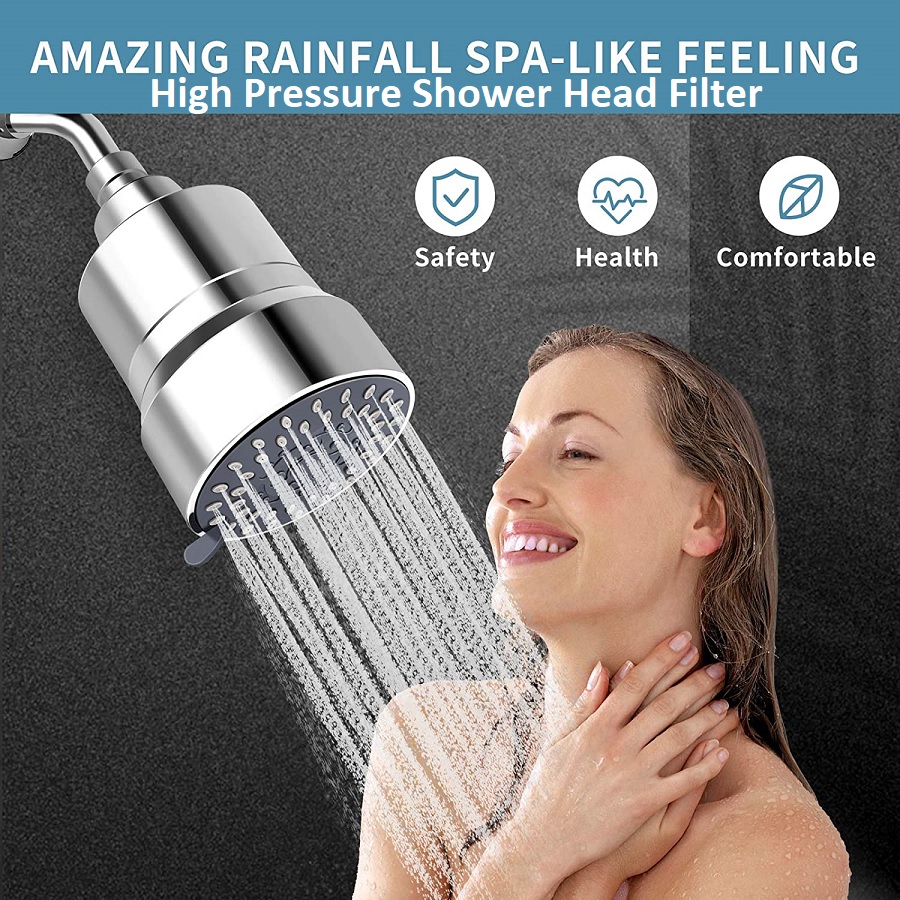When it comes to taking a shower, having good water pressure is essential to make the experience enjoyable. However, it’s not uncommon to experience low water pressure in the shower, even when the rest of the house has plenty of water pressure. In this article, we’ll explore the various reasons why there may be no water pressure in the shower but plenty everywhere else in the house.
Contents
- 1 Possible Causes of Low Water Pressure in the Shower
- 2 1.Clogged Showerhead
- 3 2.Mineral Buildup
- 4 3. Faulty or Old Shower Valve
- 5 4. Water Supply Issues
- 6 5.Plumbing Problems
- 7 Clogged Showerhead
- 8 Mineral Buildup
- 9 What is mineral buildup?
- 10 2.Faulty or Old Shower Valve
- 11 What is a shower valve?
- 12 3. Water Supply Issues
- 13 Conclusion
Possible Causes of Low Water Pressure in the Shower
Before we delve into the various causes of low water pressure in the shower, it’s important to know that the water pressure in your shower is directly related to the amount of water flowing through the showerhead. Here are some of the possible causes of low water pressure in the shower:
1.Clogged Showerhead
Over time, mineral deposits can accumulate inside the showerhead, leading to a clog. This can reduce the water flow and result in low water pressure in the shower. Symptoms of a clogged showerhead include reduced water flow and uneven water pressure.
How to clean a clogged showerhead:
One way to clean a clogged showerhead is to remove it and soak it in a bowl of vinegar and water for a few hours. This will help dissolve the mineral buildup and unclog the showerhead. Alternatively, you can use a toothbrush to scrub the showerhead and remove any mineral deposits.
Preventive measures to avoid a clogged showerhead:
One way to prevent a clogged showerhead is to install a water softener. This will help reduce the amount of minerals in the water that contribute to clogs. Additionally, you can clean the showerhead regularly to remove any buildup before it becomes a problem.
2.Mineral Buildup
In addition to clogging the showerhead, mineral buildup can also occur in the pipes that lead to the shower. This can restrict the water flow and reduce water pressure in the shower.
How to remove mineral buildup:
One way to remove mineral buildup is to hire a professional plumber to flush the pipes with a solution that dissolves the minerals. Alternatively, you can install a water softener to prevent mineral buildup from occurring in the first place.
Preventive measures to avoid mineral buildup:
Installing a water softener is the best way to prevent mineral buildup. Additionally, you can clean your showerhead regularly to remove any mineral buildup before it affects the water pressure.
3. Faulty or Old Shower Valve
The shower valve is responsible for regulating the flow of water to the showerhead. A faulty or old shower valve can restrict the flow of water and reduce water pressure in the shower.
How to fix a faulty shower valve:
If the shower valve is faulty, it may need to be repaired or replaced. This is a job that should be done by a professional plumber.
When to replace an old shower valve:
If your shower valve is old, it may be time to replace it. A new shower valve can help improve the water pressure in the shower and prevent future problems.
4. Water Supply Issues
Low water pressure in the shower can also be caused by issues with the water supply. This can be due to low water pressure from the municipal supply, pressure reducing valve issues, or other issues related to the water supply.
How to fix water supply issues:
If the water supply is the problem, you may need to contact your municipal water supplier to find out if there are any issues with the water supply. Alternatively, a professional plumber can help diagnose and fix any problems with the pressure reducing valve.
5.Plumbing Problems
Finally, low water pressure in the shower can be caused by plumbing problems, such as
leaks or blockages in the pipes that lead to the shower.
Causes of plumbing problems:
Plumbing problems can be caused by a variety of issues, such as old or corroded pipes, tree roots growing into pipes, or blockages caused by foreign objects.
How to fix plumbing problems:
Fixing plumbing problems requires a professional plumber to diagnose and fix the problem. Depending on the issue, this may involve repairing or replacing the affected pipes.
Clogged Showerhead
If you suspect that a clogged showerhead is causing low water pressure in your shower, there are a few things you can do to fix the problem.
Symptoms of a clogged showerhead:
- Reduced water flow
- Uneven water pressure
- Water spraying in different directions
How to clean a clogged showerhead:
One way to clean a clogged showerhead is to remove it and soak it in a bowl of vinegar and water for a few hours. This will help dissolve the mineral buildup and unclog the showerhead. Alternatively, you can use a toothbrush to scrub the showerhead and remove any mineral deposits.
Preventive measures to avoid a clogged showerhead:
To prevent a clogged showerhead from happening, you can install a water softener to reduce the amount of minerals in the water. Additionally, you can clean the showerhead regularly to remove any buildup before it becomes a problem.
Mineral Buildup
Mineral buildup can occur in the pipes that lead to the shower, restricting water flow and reducing water pressure.
What is mineral buildup?
Mineral buildup occurs when minerals in the water, such as calcium and magnesium, accumulate in the pipes over time.
How to remove mineral buildup:
One way to remove mineral buildup is to hire a professional plumber to flush the pipes with a solution that dissolves the minerals. Alternatively, you can install a water softener to prevent mineral buildup from occurring in the first place.
Preventive measures to avoid mineral buildup:
To prevent mineral buildup, you can install a water softener to reduce the amount of minerals in the water. Additionally, you can clean your showerhead regularly to remove any mineral buildup before it affects the water pressure.
2.Faulty or Old Shower Valve
The shower valve is responsible for regulating the flow of water to the showerhead. A faulty or old shower valve can restrict the flow of water and reduce water pressure in the shower.
What is a shower valve?
A shower valve is a device that regulates the flow of water to the showerhead. It can be located inside the wall or in a visible location on the faucet.
Symptoms of a faulty shower valve:
- Reduced water pressure
- No hot water
- Leaks around the valve
- Difficulty turning the valve
How to fix a faulty shower valve:
If the shower valve is faulty, it may need to be repaired or replaced. This is a job that should be done by a professional plumber.
When to replace an old shower valve:
If your shower valve is old, it may be time to replace it. A new shower valve can help improve the water pressure in the shower and prevent future problems.
3. Water Supply Issues
Low water pressure in the shower can also be caused by issues with the water supply.
Low water pressure from the municipal supply:
If the water pressure in your shower is low, it may be due to low water pressure from the municipal supply. This is a problem that should be addressed by your water supplier.
Pressure reducing valve issues:
If your home has a pressure reducing valve, it may be malfunctioning and causing low water pressure in the shower. A professional plumber can diagnose and fix this issue.
Water supply issues in well water systems:
If your home has a well water system, low water pressure in the shower may be caused by issues with the well pump or pressure tank. A professional plumber or well pump specialist can diagnose and fix these problems.
Conclusion
Low water pressure in the shower can be caused by a variety of issues, ranging from simple fixes to more complex problems. By understanding the common causes of low water pressure in the shower, you can take steps to prevent these issues from occurring and enjoy a more satisfying shower experience.
If you are unable to diagnose or fix the problem on your own, it is always best to consult with a professional plumber who can identify and resolve the issue quickly and efficiently.

